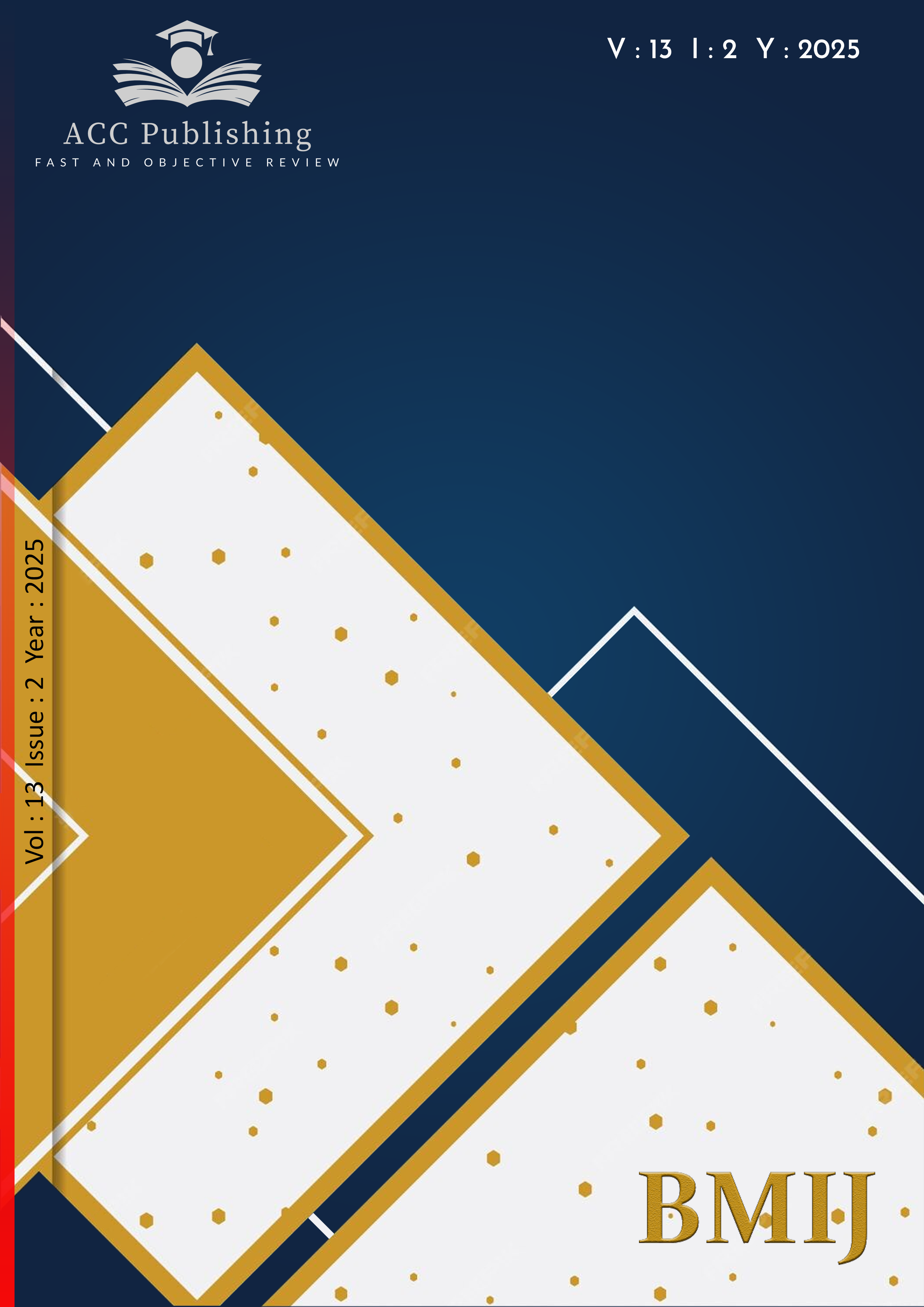Kültür eti neofobisi: Gelişmekte olan bir gıda inovasyonuna karşı tüketici tutumlarını ve davranışsal niyetlerini anlamak

Yayınlanmış 25.06.2025
Anahtar Kelimeler
- Cultured Meat Neophobia, Consumer Attitude, Behavioral Intention, Social and Cultural Concerns, Theory of Reasoned Action (TRA)
- Kültür Eti Neofobisi, Tüketici Tutumu, Davranışsal Niyet, Sosyal ve Kültürel Kaygılar, Gerekçeli Eylem Teorisi (GET)
Nasıl Atıf Yapılır
Telif Hakkı (c) 2025 Nazlı Gamze Özel- Remzi Altunışık

Bu çalışma Creative Commons Attribution-NonCommercial-NoDerivatives 4.0 International License ile lisanslanmıştır.
Nasıl Atıf Yapılır
Öz
Bu çalışma, yenilikçi ve sürdürülebilir gıda ürünlerinin kabulü önündeki engelleri anlamaya odaklanarak, kültür eti neofobisinin Türk tüketicilerin tutum ve davranışsal niyetleri üzerindeki etkisini incelemektedir. 278 katılımcıdan elde edilen veriler, SmartPLS programıyla gerçekleştirilen kısmi en küçük kareler yapısal eşitlik modellemesi (PLS-SEM) yöntemiyle analiz edilmiştir. Bulgular, Türk tüketicilerin et kalitesi, sağlık, güvenlik ve ekonomik faktörlerle ilgili kaygılar nedeniyle kültür eti neofobisi sergilediğini ve bunun tüketici tutumlarını olumsuz yönde etkilediğini ortaya koymaktadır. Buna karşın etik, sosyal ve kültürel kaygıların anlamlı bir etkisi bulunmamıştır. Tutumlar, davranışsal niyeti güçlü biçimde etkilemekte ve bazı neofobi boyutları ile davranışsal niyet arasındaki ilişkide aracı rol oynamaktadır. Ayrıca öznel normlar, davranışsal niyet üzerinde bağımsız bir etkiye sahiptir. Bu çalışma, kültür eti neofobi ölçeğini (Tsvakirai vd., 2023) farklı bir kültürel bağlamda uygulayan ilk çalışmadır ve Gerekçeli Eylem Teorisi çerçevesinde yeni teorik ve ampirik içgörüler sunmaktadır.
Referanslar
- Ajzen, I. (1991). The Theory of planned behavior. Organisational Behavior and Human Decision Processes, 50(2), 179-211. https://doi.org/10.1016/0749-5978(91)90020-T
- Aydemir, M. E., Okan, Y. T., & Takım, K. (2023). Does Generation Z Consume Artificial Meat? Türkiye Examination. Manas Journal of Agriculture Veterinary and Life Sciences, 13(2), 177-186. https://doi.org/10.53518/mjavl.1301799
- Baran, A. (2020). In vitro et’e karşı olan tutumun araştırılması: Erzurum Meslek Yüksekokulu öğrencileri örneği. Harran Üniversitesi Veteriner Fakültesi Dergisi, 9(2), 98-106. https://doi.org/10.31196/huvfd.717035
- Basha, M. B., & Lal, D. (2019). Indian consumers' attitudes towards purchasing organically produced foods: An empirical study. Journal of cleaner production, 215, 99-111. https://doi.org/10.1016/j.jclepro.2018.12.098
- Baybars, M., Ventura, K., & Weinrich, R. (2023). Can in vitro meat be a viable alternative for Turkish consumers?. MeatScience, 201, 109191.https://doi.org/10.1016/j.meatsci.2023.109191
- Bryant, C. J., & Barnett, J. C. (2019). What's in a name? Consumer perceptions of in vitro meat under different names. Appetite, 137, 104-113. https://doi.org/10.1016/j.appet.2019.02.021
- Bryant, C., & Barnett, J. (2018). Consumer acceptance of cultured meat: A systematic review. Meat science, 143, 8-17. https://doi.org/10.1016/j.meatsci.2018.04.008
- Bryant, C., & Dillard, C. (2019). The impact of framing on acceptance of cultured meat. Frontiers in Nutrition, 6, 103. https://doi.org/10.3389/fnut.2019.00103
- Bryant, C., Szejda, K., Parekh, N., Deshpande, V., & Tse, B. (2019). A survey of consumer perceptions of plant-based and clean meat in the USA, India, and China. Frontiers in Sustainable Food Systems, 3, 432863. https://doi.org/10.3389/fsufs.2019.00011
- Bryant, C., van Nek, L., & Rolland, N. C. (2020). European markets for cultured meat: A comparison of Germany and France. Foods, 9(9), 1152. https://doi.org/10.3390/foods9091152
- Castellani, P., Cassia, F., Vargas-Sánchez, A., & Giaretta, E. (2025). Food innovation towards a sustainable world: A study on intention to purchase lab-grown meat. Technological Forecasting and Social Change, 211, 123912. https://doi.org/10.1016/j.techfore.2024.123912
- Cheah, I., Shimul, A. S., Liang, J., & Phau, I. (2020). Drivers and barriers toward reducing meat consumption. Appetite, 149, 104636. https://doi.org/10.1016/j.appet.2020.104636
- Chen, H. S. (2022). Towards environmentally sustainable diets: consumer attitudes and purchase intentions for plant-based meat alternatives in Taiwan. Nutrients, 14(18), 3853. https://doi.org/10.3390/nu14183853
- Chriki, S., Ellies-Oury, M. P., & Hocquette, J. F. (2022). Is "cultured meat" a viable alternative to slaughtering animals and a good comprise between animal welfare and human expectations?. Animal Frontiers, 12(1), 35-42. https://doi.org/10.1093/af/vfac002
- Chriki, S., Payet, V., Pflanzer, S. B., Ellies-Oury, M. P., Liu, J., Hocquette, É., ... & Hocquette, J. F. (2021). Brazilian consumers' attitudes towards so-called "cell-based meat". Foods, 10(11), 2588. https://doi.org/10.3390/foods10112588
- Cohen, J. (1988). Statistical Power Analysis for the Behavioral Sciences (2nd ed.). Hillsdale, NJ: Lawrence Erlbaum Associates, Publishers.
- Dean, D., Rombach, M., Vriesekoop, F., de Koning, W., Aguiar, L. K., Anderson, M., ... & Alvarez, B. (2024). Should I really pay a premium for this? Consumer perspectives on cultured muscle, plant-based and fungal-based protein as meat alternatives. Journal of International Food & Agribusiness Marketing, 36(3), 502-526. https://doi.org/10.1080/08974438.2023.2169428
- Dupont, J., Harms, T., & Fiebelkorn, F. (2022). Acceptance of cultured meat in Germany—Application of an extended theory of planned behavior. Foods, 11(3), 424. https://doi.org/10.3390/foods11030424
- Faccio, E., & Guiotto Nai Fovino, L. (2019). Food neophobia or distrust of novelties? Exploring consumers' attitudes toward GMOs, insects and cultured meat. Applied Sciences, 9(20), 4440. https://doi.org/10.3390/app9204440
- Fishbein, M., & Ajzen, I. (1975). Belief, Attitude, Intention, and Behavior: An Introduction to Theory and Research. Reading, MA: Addison-Wesley.
- Food and Agriculture Organization (FAO). (2009). Global agriculture towards 2050. Proceedings of the High Level Expert Forum—How to Feed the World. http://www.fao.org/fileadmin/templates/wsfs/docs/Issues_papers/HLEF2050_Global_Agriculture.pdf
- Fornell, C., & Larcker, D. F. (1981). Evaluating structural equation models with unobservable variables and measurement error. Journal of marketing research, 18(1), 39-50.
- Gerber, P. J., Steinfeld, H., Henderson, B., Mottet, A., Opio, C., Dijkman, J., Falcucci A. & Tempio, G. (2013). Tackling climate change through livestock: a global assessment of emissions and mitigation opportunities (pp. xxi+-115).
- Gómez-Luciano, C. A., de Aguiar, L. K., Vriesekoop, F., & Urbano, B. (2019). Consumers' willingness to purchase three alternatives to meat proteins in the United Kingdom, Spain, Brazil and the Dominican Republic. Food quality and preference, 78, 103732. https://doi.org/10.1016/j.foodqual.2019.103732
- Hair, J. F., Black, W. C., Babin, B. J., Anderson, R. E. and Tatham R. L. (2019). Multivariate Data Analysis. (8th Ed). England: Pearson Prentice Hall.
- Hair, J. F., Hult, G. T. M., Ringle, C. M. and Sarstedt, M. (2022). A Primer on Partial Least Squares Structural Equation Modeling (PLS-SEM), (3rd ed.) Thousand Oaks, CA: Sage.
- Hamdan, M. N., Post, M. J., Ramli, M. A., & Mustafa, A. R. (2018). Cultured meat in Islamic perspective. Journal of religion and health, 57, 2193-2206. https://doi.org/10.1007/s10943-017-0403-3
- Henseler, J., Ringle, C.M., Sarstedt, M. (2015), A New Criterion For Assessing Discriminant Validity in Varience-Based Structural Equation Modeling, Journal of the Academy of Marketing Science, 43, 115-135. 10.1007/s11747-014-0403-8
- Hoang, H. C., Chovancová, M., & Hoang, T. Q. H. (2022). The theory of planned behavior and food choice questionnaire toward organic food of millennials in Vietnam. Global Business and Finance Review. https://doi.org/10.17549/gbfr.2022.27.4.81
- Hocquette, J. F., Chriki, S., Fournier, D., & Ellies-Oury, M. P. (2024). Will "cultured meat" transform our food system towards more sustainability?, Animal, https://doi.org/10.1016/j.animal.2024.101145
- Hopkins, P. D., & Dacey, A. (2008). Vegetarian meat: Could technology save animals and satisfy meat eaters?. Journal of Agricultural and Environmental Ethics, 21, 579-596. https://doi.org/10.1007/s10806-008-9110-0
- Hubert, B., Rosegrant, M., Van Boekel, M. A., & Ortiz, R. (2010). The future of food: scenarios for 2050. Crop Science, 50, S-33. https://doi.org/10.2135/cropsci2009.09.0530
- İlter, M. S. (2019). Kırsal Kalkınmada Tarım Ve Hayvancılığın Kırsal Yoksulluğu Azaltmadaki Etkileri" Yatağan'ın Sosyo-Ekonomik Yapısı Ve Tarımsal Nitelikleri". Sosyal Politika Çalışmaları Dergisi, 19(44), 629-654.
- Jang, H. W., & Cho, M. (2022). What attributes of meat substitutes matter most to consumers? The role of sustainability education and the meat substitutes perceptions. Sustainability, 14(9), 4866. https://doi.org/10.3390/su14094866
- Kock, N. (2015). Common method bias in PLS-SEM: A full collinearity assessment approach. International Journal of e-Collaboration (ijec), 11(4), 1-10. https://doi.org/10.4018/ijec.2015100101
- Kumru, M., & Demir, H. (2024). Investigation of the Acceptability of Cultured Meat in University Students. Food and Nutrition Sciences, 15(2), 151-169. 10.4236/fns.2024.152009
- Laestadius, L. I., & Caldwell, M. A. (2015). Is the future of meat palatable? Perceptions of in vitro meat as evidenced by online news comments. Public health nutrition, 18(13), 2457-2467. https://doi.org/10.1017/S1368980015000622
- Larson, N., & Story, M. (2009). A review of environmental influences on food choices. Annals of Behavioral Medicine, 38(suppl_1), 56-73. https://doi.org/10.1007/s12160-009-9120-9
- Lynch, J., & Pierrehumbert, R. (2019). Climate impacts of cultured meat and beef cattle. Frontiers in sustainable food systems, 3, 421491. https://doi.org/10.3389/fsufs.2019.00005
- Maichum, K., Parichatnon, S., & Peng, K. C. (2016). Application of the extended theory of planned behavior model to investigate purchase intention of green products among Thai consumers. Sustainability, 8(10), 1077. https://doi.org/10.3390/su8101077
- Mancini, M. C., & Antonioli, F. (2019). Exploring consumers' attitude towards cultured meat in Italy. Meat science, 150, 101-110. https://doi.org/10.1016/j.meatsci.2018.12.014
- Mancini, M. C., & Antonioli, F. (2020). To what extent are consumers' perception and acceptance of alternative meat production systems affected by information? The case of cultured meat. Animals, 10(4), 656. https://doi.org/10.3390/ani10040656
- Mancini, M. C., & Antonioli, F. (2022). The future of cultured meat between sustainability expectations and socio-economic challenges. In Future foods (331-350). Academic Press. https://doi.org/10.1016/B978-0-323-91001-9.00024-4
- Marcus, N., Klink-Lehmann, J., & Hartmann, M. (2022). Exploring factors determining German consumers' intention to eat meat alternatives. Food Quality and Preference, 100, 104610. https://doi.org/10.1016/j.foodqual.2022.104610
- Marshall, D., Bano, F., & Banas, K. (2022). A meaty issue: The effect of meat-related label terminology on the willingness to eat vegetarian foods. Food quality and preference, 96, 104413. https://doi.org/10.1016/j.foodqual.2021.104413
- Mattick, C., & Allenby, B. (2013). The future of meat. Issues in Science and Technology, 30(1), 64-70.
- Morais-da-Silva, R. L., Reis, G. G., Sanctorum, H., & Molento, C. F. M. (2022). The social impacts of a transition from conventional to cultivated and plant-based meats: evidence from Brazil. Food Policy, 111, 102337. https://doi.org/10.1016/j.foodpol.2022.102337
- Motoki, K., Park, J., Spence, C., & Velasco, C. (2022). Contextual acceptance of novel and unfamiliar foods: Insects, cultured meat, plant-based meat alternatives, and 3D printed foods. Food Quality and Preference, 96, 104368. https://doi.org/10.1016/j.foodqual.2021.104368
- Newton, P., & Blaustein-Rejto, D. (2021). Social and economic opportunities and challenges of plant-based and cultured meat for rural producers in the US. Frontiers in Sustainable Food Systems, 5, 624270. https://doi.org/10.3389/fsufs.2021.624270
- Nişancı, Z. (2023). Sayılarla Türkiye’de inanç ve dindarlık. İstanbul: International Institute of Islamic Thought & Mahya Yayıncılık.
- OECD/FAO (2023). OECD-FAO Agricultural Outlook 2023-2032, OECD Publishing, Paris, https://doi.org/10.1787/08801ab7-en
- Petetin, L. (2014). Frankenburgers, risks and approval. European Journal of Risk Regulation, 5(2), 168-186. https://doi.org/10.1017/S1867299X00003585
- Piqueras-Fiszman, B., & Spence, C. (2015). Sensory expectations based on product-extrinsic food cues: An interdisciplinary review of the empirical evidence and theoretical accounts. Food Quality and Preference, 40, 165-179. https://doi.org/10.1016/j.foodqual.2014.09.013
- Pliner, P., & Hobden, K. (1992). Development of a scale to measure the trait of food neophobia in humans. Appetite, 19(2), 105-120. https://doi.org/10.1016/0195-6663(92)90014-W
- Post, M. J., Levenberg, S., Kaplan, D. L., Genovese, N., Fu, J., Bryant, C. J., ... & Moutsatsou, P. (2020). Scientific, sustainability and regulatory challenges of cultured meat. Nature Food, 1(7), 403-415. https://doi.org/10.1038/s43016-020-0112-z
- Ringle, C. M., Wende, S. and Becker, J-M. (2022). SmartPLS 4. Boenningstedt: SmartPLS. https://www.smartpls.com (accessed October 29, 2024).
- Risner, D., Negulescu, P., Kim, Y., Nguyen, C., Siegel, J. B., & Spang, E. S. (2024). Environmental impacts of cultured meat: A cradle-to-gate life cycle assessment. ACS food science & technology, 5(1), 61-74. https://pubs.acs.org/doi/10.1021/acsfoodscitech.4c00281
- Saied, A. A., Chandran, D., Chopra, H., Dey, A., Emran, T. B., & Dhama, K. (2023). Cultivated meat could aid in reducing global antimicrobial resistance burden–producing meat without antibiotics as a safer food system for the future. International Journal of Surgery, 109(2), 189-190. 10.1097/JS9.0000000000000199
- Sarstedt, M., Ringle, C.M., Hair, J.F. (2017), Partial Least Squares Structural Equation Modeling. In: Homburg, C., Klarmann, M., Vomberg A. (Eds.), Handbook of Market Research. Springer, Cham. https://doi.org/10.1007/978-3-319-05542-8_15-1
- Shen, Y. C., & Chen, H. S. (2020). Exploring consumers' purchase intention of an innovation of the agri-food industry: A case of artificial meat. Foods, 9(6), 745.https://doi.org/10.3390/foods9060745
- Siegrist, M., & Hartmann, C. (2020). Perceived naturalness, disgust, trust and food neophobia as predictors of cultured meat acceptance in ten countries. Appetite, 155, 104814. https://doi.org/10.1016/j.appet.2020.104814
- Siegrist, M., & Sütterlin, B. (2017). Importance of perceived naturalness for acceptance of food additives and cultured meat. Appetite, 113, 320-326. 10.1016/j.appet.2017.03.019
- Szejda, K., Bryant, C. J., & Urbanovich, T. (2021). US and UK consumer adoption of cultivated meat: a segmentation study. Foods, 10(5), 1050. https://doi.org/10.3390/foods10051050
- Tang, K. L., Caffrey, N. P., Nóbrega, D. B., Cork, S. C., Ronksley, P. E., Barkema, H. W., ... & Ghali, W. A. (2017). Restricting the use of antibiotics in food-producing animals and its associations with antibiotic resistance in food-producing animals and human beings: a systematic review and meta-analysis. The Lancet Planetary Health, 1(8), e316-e327. 10.1016/S2542-5196(17)30141-9
- Thangavelu, K. P., Hyland, J. J., Henchion, M., Kerry, J. P., & Álvarez, C. (2022). Consumer intention towards the phosphate-reduced processed meat products using the extended theory of planned behavior. Meat Science, 193, 108947. https://doi.org/10.1016/j.meatsci.2022.108947
- Trafimow, D. (2009). The theory of reasoned action: A case study of falsification in psychology. Theory & Psychology, 19(4), 501-518. https://doi.org/10.1177/0959354309336319
- Tsvakirai, C. Z., Nalley, L. L., & Makgopa, T. (2023). Development and validation of a cultured meat neophobia scale: Industry implications for South Africa. Scientific African, 20, e01641. https://doi.org/10.1016/j.sciaf.2023.e01641
- Tubb, C., & Seba, T. (2021). Rethinking food and agriculture 2020-2030: the second domestication of plants and animals, the disruption of the cow, and the collapse of industrial livestock farming. Industrial Biotechnology, 17(2), 57-72. https://doi.org/10.1089/ind.2021.29240.ctu
- Tucker, C. A. (2014). The significance of sensory appeal for reduced meat consumption. Appetite, 81, 168-179. https://doi.org/10.1016/j.appet.2014.06.022
- Tuomisto, H. L., & Teixeira de Mattos, M. J. (2011). Environmental impacts of cultured meat production. Environmental science & technology, 45(14), 6117-6123. 10.1021/es200130u
- Turkish Statistical Institute (TURKSTAT). (2023). Gelir ve Yasam Kosulları Arastırması, 2023 (Income and Living Conditions Survey, 2023). https://data.tuik.gov.tr/Kategori/GetKategori?p=Gelir,-Yasam,-Tuketim-ve-Yoksulluk-107 (Accessed October 29, 2024).
- United Nations, Department of Economic and Social Affairs, Population Division. (2019). World population prospects 2019: Highlights. https://population.un.org (accessed October 29, 2024).
- Verbeke, W. A., & Viaene, J. (2000). Ethical challenges for livestock production: Meeting consumer concerns about meat safety and animal welfare. Journal of Agricultural and Environmental Ethics, 12, 141-151. https://doi.org/10.1023/A:1009538613588
- Verbeke, W., Marcu, A., Rutsaert, P., Gaspar, R., Seibt, B., Fletcher, D., & Barnett, J. (2015). 'Would you eat cultured meat?': Consumers' reactions and attitude formation in Belgium, Portugal and the United Kingdom. Meat science, 102, 49-58. https://doi.org/10.1016/j.meatsci.2014.11.013
- Wang, O., & Scrimgeour, F. (2023). Consumer segmentation and motives for choice of cultured meat in two Chinese cities: Shanghai and Chengdu. British Food Journal, 125(2), 396-414. https://doi.org/10.1108/BFJ-09-2021-0987
- Weinrich, R., Strack, M., & Neugebauer, F. (2020). Consumer acceptance of cultured meat in Germany. Meat science, 162, 107924. https://doi.org/10.1016/j.meatsci.2019.107924
- Wilks, M., & Phillips, C. J. (2017). Attitudes to in vitro meat: A survey of potential consumers in the United States. PloS one, 12(2), e0171904. 10.1371/journal.pone.0171904
- Wilks, M., Phillips, C. J., Fielding, K., & Hornsey, M. J. (2019). Testing potential psychological predictors of attitudes towards cultured meat. Appetite, 136, 137-145. 10.1016/j.appet.2019.01.027
- Yıldız, E. (2021). SmartPLS ile Yapısal Eşitlik Modellemesi Reflektif ve Formatif Yapılar (2nd ed.) Ankara: Seçkin Yayıncılık.



